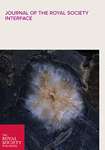View Item
- xmlui.general.dspace_homeCentros Regionales y EEAsCentro Regional Patagonia NorteEEA BarilocheArtículos científicosxmlui.ArtifactBrowser.ItemViewer.trail
- DSpace Home
- Centros Regionales y EEAs
- Centro Regional Patagonia Norte
- EEA Bariloche
- Artículos científicos
- View Item
A multivariate geostatistical framework for combining multiple indices of abundance for disease vectors and reservoirs: a case study of rattiness in a low-income urban Brazilian community
Abstract
A key requirement in studies of endemic vector-borne or zoonotic disease is an estimate of the spatial variation in vector or reservoir host abundance. For many vector species, multiple indices of abundance are available, but current approaches to choosing between or combining these indices do not fully exploit the potential inferential benefits that might accrue from modelling their joint spatial distribution. Here, we develop a class of multivariate
[ver mas...]
A key requirement in studies of endemic vector-borne or zoonotic disease is an estimate of the spatial variation in vector or reservoir host abundance. For many vector species, multiple indices of abundance are available, but current approaches to choosing between or combining these indices do not fully exploit the potential inferential benefits that might accrue from modelling their joint spatial distribution. Here, we develop a class of multivariate generalized linear geostatistical models for multiple indices of abundance. We illustrate this novel methodology with a case study on Norway rats in a low-income urban Brazilian community, where rat abundance is a likely risk-factor for human leptospirosis. We combine three indices of rat abundance to draw predictive inferences on
a spatially continuous latent process, rattiness, that acts as a proxy for abundance. We show how to explore the association between rattiness and spatially varying environmental factors, evaluate the relative importance of each of the three contributing indices, assess the presence of residual, unexplained spatial variation, and identify rattiness hotspots. The proposed methodology is applicable
more generally as a tool for understanding the role of vector or reservoir host abundance in predicting spatial variation in the risk of human disease.
[Cerrar]

Author
Eyre, Max T.;
Soares de Andrade de Carvalho Pereira, Ticiana;
Souza, Fabio N.;
Khalil, Hussein;
Hacker, Kathryn P.;
Serrano, Laura Soledad;
Taylor, Joshua Paul;
Reis, Mitermayer G.;
Ko, Albert I.;
Begon, Mike;
Diggle, Peter J.;
Costa, Federico;
Giorgi, Emanuele;
Fuente
Journal of the Royal Society Interface 17 (170) : 1-21 (septiembre 2020)
Date
2020-09-02
Editorial
The Royal Society Publishing
ISSN
1742-5689
1742-5662
1742-5662
Formato
pdf
Tipo de documento
artículo
Palabras Claves
Derechos de acceso
Restringido
 Excepto donde se diga explicitamente, este item se publica bajo la siguiente descripción: Creative Commons Attribution-NonCommercial-ShareAlike 2.5 Unported (CC BY-NC-SA 2.5)
Excepto donde se diga explicitamente, este item se publica bajo la siguiente descripción: Creative Commons Attribution-NonCommercial-ShareAlike 2.5 Unported (CC BY-NC-SA 2.5)

